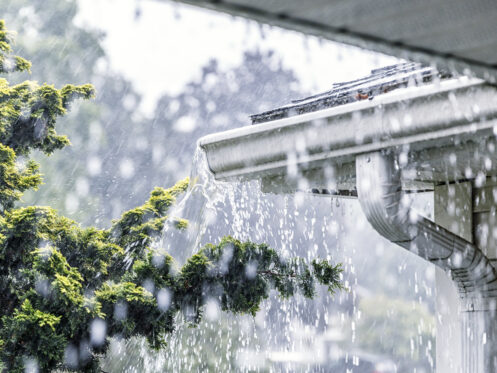Storm season brings gusts, lightning strikes, and sudden power surges that can knock out circuits and damage appliances. At E&W Electrical Solutions, we inspect panels, secure outdoor outlets, and install surge barriers in your Paris, TN, home, so your power holds steady when the skies open up. Get a storm-ready circuit inspection today and rest easy knowing your wiring withstands high winds and heavy rain.
Assessing Your Service Panel and Breakers
Your home’s circuit panel serves as the hub for every outlet, light, and appliance. A storm can jolt power lines, sending a sudden spike into your wiring that trips breakers or fries circuitry. Begin by opening the panel door and checking for corrosion on bus bars, rusty screws, or loose breakers. Look for scorch marks around breaker handles that hint at past arcing events.
Mark each breaker so you can switch off just the circuits you need when bad weather hits, without knocking out your whole house. An electrician can snug up loose connections, swap old breakers, and install a new panel that handles today’s devices. If your panel is really old, it might not deliver enough power for modern gadgets.
Securing Exterior Outlets and Conduits
Outdoor receptacles and the cables that feed them present a prime path for moisture to sneak in during heavy rain or wind-driven storms. Rain entering an unprotected outlet can rust contacts or short the circuit. Roof overhangs, siding gaps, and loose conduit fittings allow water to enter inside walls and junction boxes.
Inspect every exterior receptacle by opening its weatherproof cover and feeling around the box for moisture. A professional can replace old outlet boxes with sealed, gasketed versions and switch old plastic covers for durable metal ones rated for wet locations. Conduit connectors may need new rubber gaskets or locknuts to clamp securely around cable jackets. Ground-fault circuit interrupter (GFCI) outlets at each outdoor location offer a rapid shutdown if current leaks into moisture.
Surge Protection for Electronics and Appliances
When lightning hits or the grid wobbles, your home can suffer a sudden jolt of extra voltage. That spike can fry TVs, computers, or even the controls in your heating and cooling system. A professional electrician can install a surge protector at your meter or inside your breaker panel to divert that extra voltage to the ground. For big-ticket items, like well pumps or freezers, electricians can add separate protection on a sub-panel so those circuits stay safe. Electricians will check the protection with a meter to make sure it kicks in fast enough. Good surge protection stops expensive damage and keeps your electronics running smoothly.
Generator and Backup Power Options
Extended outages during a severe storm leave you in the dark and without essential services, such as refrigeration, water pumps, and furnace controls. Portable generators require careful manual setup and safe fueling, but they can power critical circuits in a pinch. A more seamless option is to install a standby generator with an automatic transfer switch. When the grid falters, the transfer switch senses a loss of voltage and switches your home over to generator power in seconds.
Professional installation involves mounting the generator on a level pad, wiring it to your panel through the transfer switch, and connecting a fuel supply line from propane or natural gas. A sound-attenuated model runs quietly outside, and weekly self-test routines keep it ready. You never have to brave storm debris or gasoline spills in the dark. With backup power wired into your home’s circuits, lighting, HVAC system controls, and medical equipment can run uninterrupted until the grid comes back online.
Inspecting Wiring for Tree and Debris Hazards
Overhanging branches, trash can lids, and outdoor equipment can catch on overhead wires and pull them free during high winds. Downed lines create shock and fire hazards that can energize fences, pools, or landscaping. Before storm season arrives, walk around your property and look for tree limbs brushing power cables or sucking up across the pole entry point. Pull branches back to a safe clearance and prune any that threaten to scrape the service mast or secondary conductors.
Routine Testing and Maintenance Schedules
Putting off electrical maintenance leads to surprise failures when you need power most. A simple annual service call before storm season lets an electrician perform voltage checks, ground-wire tests, and thermal scans of panel connections. Thermal imaging catches hot spots where loose connections or overloaded breakers begin to overheat.
Tightening lugs and adding proper torque to screws stops that heat buildup. Testing ground rods and bonding ensures stray currents drain safely into the earth rather than through appliance frames. Checking GFCI and arc-fault interrupter functions by simulating fault conditions confirms they trip correctly. These devices guard against shocks and electrical fires during sudden surges.
Prepare Your Home’s Electrical Safety Now
Taking steps now to prepare your electrical system for storm season helps you avoid emergency call-outs and costly damage to electronics. From panel upgrades and surge protection to generator hookups and routine inspections, a professional approach keeps your home powered when weather hits. Alongside storm prep, E&W Electrical Solutions offers ceiling fan installation, outdoor lighting upgrades, and smart home wiring to upgrade your living space.
Ready for reliable power through every downpour? Contact E&W Electrical Solutions today.

